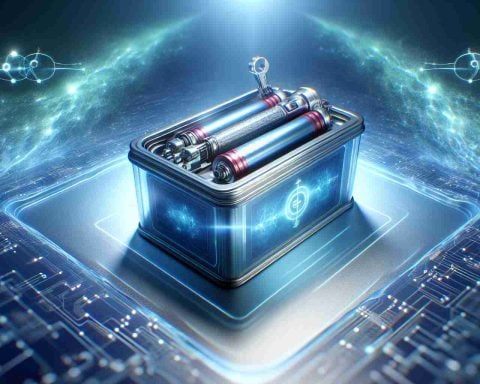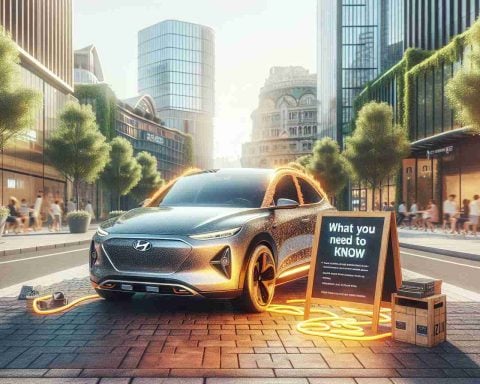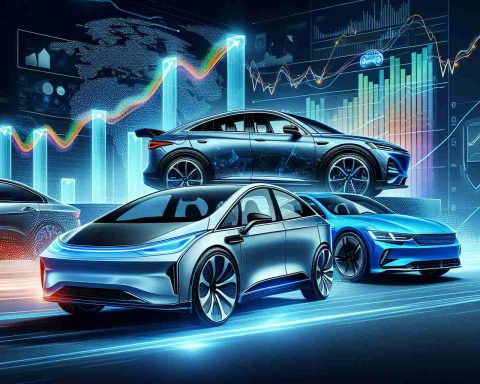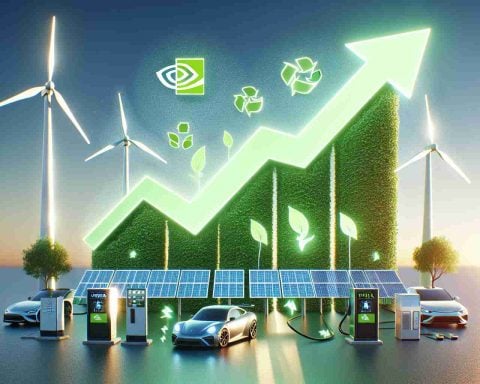- Bridgestone and Toyama City have launched the “Green Slow Mobility” project to revolutionize urban transport with low-speed electric vehicles (EVs).
- The initiative features compact EVs moving at speeds under 20 km/h, providing a serene and sustainable commuting option.
- These zero-emission vehicles aim to enhance air quality and alleviate traffic congestion in urban areas.
- Bridgestone’s advanced EV technology underpins the project, highlighting a commitment to sustainability and innovation.
- This project seeks to transform daily commutes into tranquil experiences, setting an example for cities worldwide.
- The collaboration invites other cities to rethink their transportation systems for a more sustainable future.
The bustling city streets are about to get a little calmer thanks to a groundbreaking initiative between Bridgestone and Toyama City. Picture sleek, compact electric vehicles (EVs) gracefully weaving through urban centers, adhering to a gentle pace under 20 kilometers per hour. This serene image is part of the ambitious “Green Slow Mobility” project, crafted to reshape urban transport.
Envision these low-speed EVs becoming an integral part of the cityscape, offering a new, clean mode of commuting. Imagine a shared ride, seats encircled within a cozy, emission-free cabin gliding through bustling districts. Passengers escape the hustle, enjoying a gentle breeze as their vehicle cruises past city landmarks.
This isn’t just about transportation—it’s a vision for the future, one that whispers promises of improved air quality and reduced traffic congestion. Bridgestone and Toyama City aim to transform how we perceive daily commutes, from rushed and noisy to tranquil and environmentally friendly.
Through this symbiotic alliance, Bridgestone lends its innovative prowess to the project’s technological backbone. Cutting-edge EV technology powers each vehicle, lying at the heart of a movement that champions sustainability. For Toyama’s residents, this collaboration offers more than convenience; it reshapes the very rhythm of urban living.
Ultimately, the key takeaway is as clear as the vision itself: leveraging technology for the betterment of public transport and environmental sustainability. This ambitious venture sets a bold precedent, inviting other cities to reimagine their transit ecosystems. Embrace the change, and experience the future—it’s already on its way, one green mile at a time.
Discover the Future of Urban Commuting with Bridgestone’s and Toyama City’s Green Slow Mobility
Introduction
The collaboration between Bridgestone and Toyama City aims to redefine urban commuting through their “Green Slow Mobility” initiative. This project introduces low-speed electric vehicles (EVs) to enhance urban transport efficiency and sustainability. However, beyond the promising vision painted by Bridgestone and Toyama, let’s explore the practical implications, industry trends, and potential challenges related to this project.
How-To Steps & Life Hacks: Switching to Slow Mobility
1. Understand the Benefits: Know the environmental advantages of slow electric mobility, such as decreased emissions and reduced noise pollution.
2. Engage with Local Solutions: Identify available low-speed EV programs in your area and how they integrate with public transport networks.
3. Utilize Technology: Use mobile apps developed by the initiative to track these slow EVs and book shared rides conveniently.
4. Participation in Community Programs: Join community workshops or city events that aim to educate the public about sustainable transport and how to use these vehicles effectively.
Real-World Use Cases
– Urban Centers: These low-speed EVs are perfect for navigating congested zones, especially during peak hours when faster vehicles are less efficient.
– Tourism: Tourists can use these EVs for sightseeing in a relaxed, eco-friendly manner.
– Corporate Campuses and Universities: Provide a sustainable intra-campus transport solution.
Market Forecasts & Industry Trends
According to a report by Allied Market Research, the global electric vehicle market is projected to reach $802.81 billion by 2027, expanding at a CAGR of 22.6% from 2020. Integrating low-speed EVs in urban environments is expected to be a growing trend, encouraging cities worldwide to adopt similar approaches for smart city developments.
Reviews & Comparisons
Cities such as Amsterdam and Oslo have successfully integrated electric public transport, but Toyama City differentiates itself with its focus on low-speed, tranquil commutes. While high-speed EVs look to solve long commutes, the Green Slow Mobility project prioritizes short, serene urban trips.
Controversies & Limitations
– Infrastructure: Implementation may be hindered by inadequate infrastructure, such as charging stations and dedicated lanes.
– Speed Limitations: A maximum speed of 20 km/h may not suit commuters who need faster transportation options.
Security & Sustainability
Bridgestone’s innovation emphasizes vehicle safety, equipping these EVs with advanced sensors to navigate urban areas safely. The sustainability angle is enhanced by the vehicles’ reliance on renewable energy sources.
Insights & Predictions
Experts predict that initiatives like these will lower individual car ownership, promoting the use of on-demand, shared transport options. The shift towards low-speed EVs in dense urban areas might lead to completely car-free zones that further boost environmental health.
Pros & Cons Overview
Pros:
– Reduction in city noise and air pollution.
– Encouragement of a more sustainable, community-focused lifestyle.
– Added convenience for short urban commutes.
Cons:
– Potential delays in implementation due to the need for new infrastructure.
– Limitations in speed may make it unsuitable for all commuters.
Actionable Recommendations
– Advocate for Development: Support local policies that promote EV infrastructure expansion.
– Experiment with Use: Try out these low-speed EV options in your city if available, and provide feedback to local authorities.
– Consider Alternative Modes: Evaluate your personal transport habits and consider incorporating public or shared transport options to lower your carbon footprint.
Conclusion
Bridgestone and Toyama City’s “Green Slow Mobility” project signals an evolutionary step towards cleaner, more peaceful urban commutes. As the initiative gains traction, it invites other cities to reconsider and reshape their urban mobility strategies. Enjoy the tranquil benefits by adopting similar sustainable practices within your community.
For more information on sustainable transport innovations, visit Bridgestone and Toyama City.



















